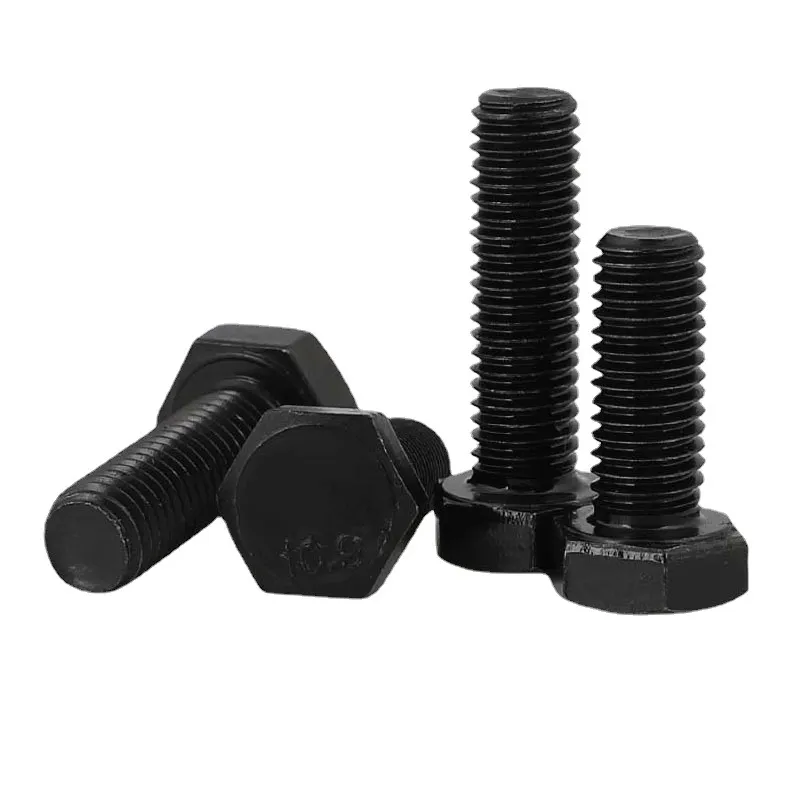

M16 x 1.0 Nut Specifications and Applications for Various Projects
Oct . 21, 2024 22:52 Back to list
M16 x 1.0 Nut Specifications and Applications for Various Projects
Understanding the M16 X 1.0 Nut Specifications, Uses, and Applications
In the world of mechanical engineering and manufacturing, various standards and specifications need to be adhered to in order to ensure compatibility, safety, and functionality of components. One such component that frequently appears in machinery and construction applications is the M16 x 1.0 nut. This article delves into the specifications, uses, and applications of the M16 x 1.0 nut, providing insights into its significance in various fields.
Specifications of M16 x 1.0 Nut
The M16 x 1.0 nut is a type of metric nut designed to fit a 16 mm diameter bolt with a 1.0 mm pitch. Understanding these dimensions is crucial for anyone working with this hardware component. The M in M16 signifies that the dimensions are specified in metric units, while 16 refers to the nominal diameter of the bolt. The 1.0 indicates the distance between threads – this is the thread pitch, which is the linear distance between the crests of adjacent threads.
Typically, M16 nuts are made from high-strength materials such as carbon steel, stainless steel, or alloy steel, offering superior durability and resistance to corrosion. Coatings such as zinc plating or black oxide are also applied to enhance the nuts' resistance to environmental factors that could lead to rust or degradation.
Uses of M16 x 1
.0 NutsM16 x 1.0 nuts are extremely versatile. They are commonly used in various assemblies where a strong and secure fastening is required. Their primary function is to pair with M16 bolts or screws, providing a reliable clamping force that secures connected components.
These nuts can be found in numerous applications including automotive parts, machinery, structural frameworks, and heavy equipment. In the automotive industry, for example, M16 nuts are often used in engine assembly for securing critical components. Meanwhile, in construction, they may be utilized to fasten steel beams or other structural elements, ensuring that infrastructure remains stable and secure.
m16 x 1.0 nut

Applications in Various Industries
1. Automotive Industry In automotive manufacturing, M16 x 1.0 nuts are commonly employed in engine assemblies, chassis components, and suspension systems. Their strength and ability to withstand vibrations make them ideal for securing various parts under high-stress conditions.
2. Manufacturing In factory settings, M16 nuts are widely used in machinery and equipment assemblies. They ensure that parts are tightly secured, which is crucial for maintaining the precision and efficiency of manufacturing processes.
3. Construction The construction industry frequently utilizes M16 nuts in the assembly of steel structures, bridges, and buildings. These nuts provide the necessary holding power to maintain the structural integrity of large-scale projects.
4. Aerospace In the aerospace sector, M16 nuts may also find their place within aircraft assemblies, where lightweight and high-strength components are critical.
5. Maintenance and Repair M16 nuts are also essential in maintenance and repair activities across various industries. They facilitate the quick and efficient assembly and disassembly of machinery, enabling technicians to carry out repairs swiftly.
Conclusion
The M16 x 1.0 nut is a hallmark of reliability and strength in the mechanical and manufacturing fields. Its specifications make it suitable for various applications, ranging from automotive assemblies to structural construction. As industries continue to evolve and develop more complex systems, the demand for robust and versatile fastening solutions like the M16 x 1.0 nut will only increase. Understanding their properties and applications not only aids engineers and technicians in selecting the right components but also ensures that the integrity and safety of their projects remain uncompromised. Whether you're designing a new product, maintaining existing machinery, or working on construction projects, the M16 x 1.0 nut is an indispensable tool in your hardware arsenal.
Latest news
-
High-Strength Hot Dip Galvanized Bolts - Hebei Longze | Corrosion Resistance, Customization
NewsJul.30,2025
-
Hot Dip Galvanized Bolts-Hebei Longze|Corrosion Resistance&High Strength
NewsJul.30,2025
-
High-Strength Hot-Dip Galvanized Bolts-Hebei Longze|Corrosion Resistance&High Strength
NewsJul.30,2025
-
Hot Dip Galvanized Bolts-Hebei Longze|Corrosion Resistance&High Strength
NewsJul.30,2025
-
Hot Dip Galvanized Bolts - Hebei Longze | Corrosion Resistance, High Strength
NewsJul.30,2025
-
High-Strength Hot Dip Galvanized Bolts-Hebei Longze|Corrosion Resistance, Grade 8.8
NewsJul.30,2025

